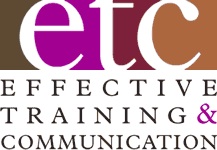I’m pleased with your very positive reaction to this new feature. Several readers commented on how useful the short answers were and others offered new questions. So, here are more Questions About Presentations:
1. Should I memorize my presentation?
Short answer – NO! I don’t understand why some experts think it’s a good idea to memorize a typical workplace presentation. Some authors even suggest it. Allow me my usual rant in response.
There are very few instances when workplace presenters should memorize their presentations. Those cases really call upon us to be performers, not presenters. Memorizing takes way too much time and mental effort and increases the probability that you’ll freeze if you forget a word, phrase or point. The audience only knows what they hear, not what you should or could have said. So, the answer is to LEARN your presentation, not memorize it.
Practice your presentation out loud several times. Audio tape it so you can hear what the audience hears and critique yourself. Use a minimal number of notes to help keep you on track and remember key points or facts.
Spend enough time to really nail your introduction and conclusion with the least amount of referring to notes. Given how important they are to delivering an audience-centric presentation, they’re worth the effort.
If you include important stats, quotes or a brief poem, it’s OK to memorize them if you can. But no one in your audience will think any less of you if you read those verbatim from notes. That’s entirely logical and appropriate.
2. Where should I stand when presenting?
Presenters should generally stand on the audience’s left where possible:
- Logical flow of their gaze from speaker to slide and back to speaker – assuming English content, of course.
- Also easier for speakers to glance at the screen – in silence – if they’re using it as a prompter.
- If there’s no remote and the podium is on the audience’s right – shame on someone but make the best of it. Just don’t stand behind the podium … ever – a very negative non-verbal message.
Movement while presenting is fine, but only if it’s logical and motivated. Movement for the sake of movement is distracting. As speakers move closer to one part of the audience, they move away from other parts, so a little goes a long way.
And obviously avoid moving in front of the screen. That screams ‘amateur’ at the audience loud and clear.
So, stand and deliver with Power and Success … on their left.
3. How Do I Achieve Random Eye Contact?
I regularly recommend holding eye contact on one person at a time for 8 – 10 seconds or to complete a thought. Then, moving to a new person in silence in a random pattern.
- Don’t be predictable with your eye contact. And don’t think about it too much. You have more important things on your mind.
- If you go around the room in order, it looks odd and the people at the ‘end of the line’ will become disengaged and distracted. Work all parts of the audience equally, but randomly.
- When you’re in that typical long, narrow boardroom setting at one end of the long rectangular table, avoid the temptation to alternate between the left and the right side. This ‘pendulum effect’ can also become distracting for the audience, even comical.
So, strive for random, natural and non-distracting eye contact. Your audience will appreciate your efforts.
My thanks to the engaged readers who helped make this piece possible. I’m looking forward to your questions for next month already.

